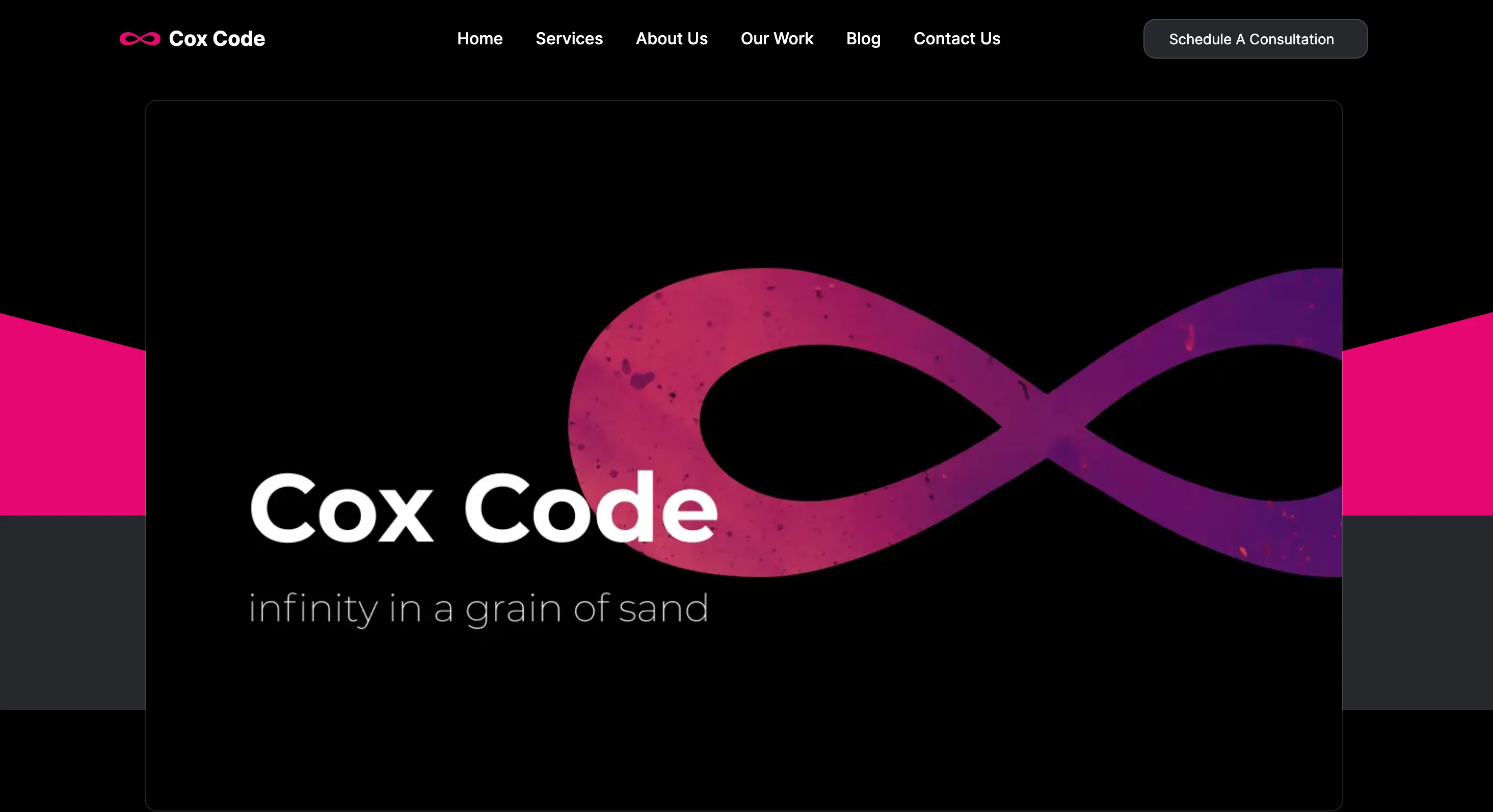Boosting Web Performance: How We Supercharged Our Agency’s Site with Astro JS Image & Speed Optimization Techniques
Our journey at Cox Code began with a simple goal: to enhance our web agency's site performance. This article delves into the effective strategies and lessons learned through our hands-on experience with Astro JS.

Thu Feb 08 2024
Ben Ajaero
Boosting Web Performance: How We Supercharged Our Agency’s Site with Astro JS Image & Speed Optimization Techniques
Part 1: Introduction to Astro JS and Optimization
Introduction to Astro JS
Astro JS has emerged as an innovative and modern framework for building faster websites with less client-side JavaScript. By delivering only the necessary JavaScript to the user, Astro optimizes loading times and provides a smooth experience across all devices.
The Importance of Website Speed and Performance
Speed is a cornerstone of web performance. A faster website translates to better user engagement, higher conversion rates, and improved SEO rankings. Major search engines prioritize user experience, making speed an essential factor for visibility and success.
The Role of Image Optimization in Web Performance
Images are often the heaviest elements on a web page. Optimizing images can significantly reduce load times, but it’s a delicate balance to maintain image quality. Finding the right optimization techniques is crucial for web performance without compromising visual integrity.
Transition to the Optimization Journey
Our journey at Cox Code began with a simple goal: to enhance our web agency’s site performance. This article delves into the effective strategies and lessons learned through our hands-on experience with Astro JS.
Part 2: Deep Dive into Optimization Techniques

Image Optimization Strategies
Choosing the Right Format with Astro JS
Selecting the proper image format is pivotal. While JPEGs are traditionally used for photographs, and PNGs for graphics with transparency, WebP offers superior compression and quality. Astro’s <Image /> component simplifies implementing WebP, enabling automatic format selection based on browser compatibility.
Effective Use of Compression Tools
Image compression can be lossy or lossless, with each having its place in web development. Tools like Sharp provide easy-to-use interfaces for adjusting compression levels, allowing developers to find the perfect balance for their images.

Implementing Responsive Images in Astro JS
Responsive images ensure that users download the most appropriately sized image for their device. Astro JS makes implementing srcset and sizes attributes straightforward, enhancing performance without sacrificing quality on any screen size.
Lazy Loading Images with Astro JS
Lazy loading defers the loading of non-critical resources, which can significantly improve initial page load times. Astro supports lazy loading out-of-the-box, ensuring that images are loaded only when they enter the viewport.
Performance Optimization Techniques
Leveraging Astro JS for Better JavaScript Management
Astro allows developers to minimize and bundle JavaScript effectively. It supports inline critical JavaScript and defers the loading of non-critical scripts, reducing initial load times and improving the time to interactive.
CSS Optimization in Astro JS
Astro encourages the minification and purification of CSS. It also supports extracting critical CSS, ensuring that only the necessary styles are loaded first, thus reducing render-blocking resources.
Improving Server-Side Performance
Server performance is just as crucial as client-side optimizations. Implementing server-side caching and fine-tuning server configurations can markedly enhance web performance.
Utilizing Astro JS Build & Deployment Advantages
Astro’s static site generation (SSG) feature ensures a faster and more secure deployment. Its build process is optimized for performance, making the most out of modern hosting platforms.
Speed Optimization Best Practices
Code Splitting and Modular Development
Astro’s modular development approach allows for code splitting by default. This ensures that users load only the code they need, reducing load times significantly.
Optimizing Third-Party Scripts and Fonts
Third-party scripts and fonts can impact performance. Astro JS encourages best practices like font-display swap and script deferment to minimize their impact.
Network Performance Enhancements
Strategies like utilizing CDNs, optimizing for HTTP/2, and resource prefetching and preloading can lead to significant network performance improvements.
Monitoring and Analytics for Continuous Improvement
Continuous monitoring with tools like Google’s PageSpeed Insights enables developers to understand and improve performance over time, ensuring that the website remains fast and efficient.
FAQs on Optimization with Astro JS
What is Astro JS and how does it contribute to web performance?
Astro JS is a modern framework designed to build websites with less client-side JavaScript, enabling faster load times and better performance.
Can Astro JS be used with image CDNs for optimization?
Yes, Astro JS can work seamlessly with image CDNs, leveraging their capabilities to further optimize image delivery.
Does Astro JS support lazy loading for images and other resources?
Absolutely, Astro JS has built-in support for lazy loading, enhancing performance by loading resources only as needed.
How does Astro JS handle CSS and JavaScript for performance gains?
Astro intelligently manages CSS and JavaScript by minimizing, bundling, and deferring non-critical resources, thus speeding up page loads.
Lessons Learned from Our Optimization Journey

Key Takeaways from Optimizing Our Web Agency Website
Our primary lesson was the importance of iterative testing and optimization. Each change brought us closer to our performance goals, highlighting the continual nature of web optimization.
Final Thoughts and Recommendations
We encourage adopting a performance-first mindset. Utilizing Astro JS is an example of using performative technologies to drive real impact.





